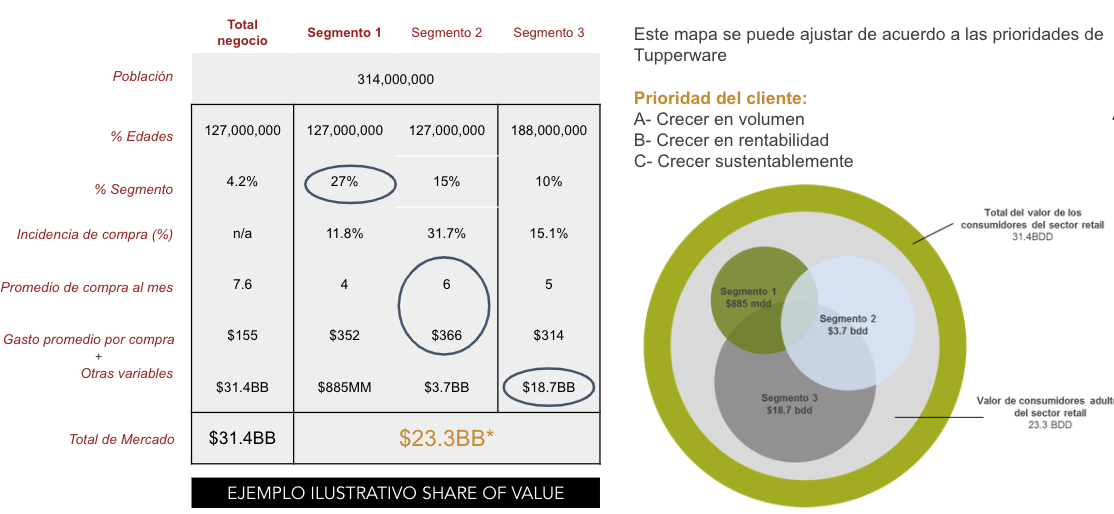Module 3. Go to Market. Market Penetration
Customer Segmentation
Transformation from SME to Large Company
Workshop #12
CONSUMER SEGMENTATION IS KEY TO EXECUTING A SUCCESSFUL GO-TO-MARKET STRATEGY
In my professional career, I have had the opportunity to support dozens of brands with this particular challenge, from retail segmentations to B2B segmentations.
And you will ask yourselves, why is customer segmentation so important? Why do brands experience a boost in their growth after segmentation? The main reason is that behind segmentation there are samplings and quantitative studies that allow us, through advanced statistical methods, to generate consumer cluster algorithms, that is; it is scientific and verifiable.
By identifying segments and understanding their needs, one can better focus the strategy towards segments that have a greater affinity with our brands. Additionally, by considering trends, one can determine how they will impact the lifestyles of these segments over the next 5 years (Foresights). This facilitates the creation of more effective and personalized marketing strategies, which in turn improves customer satisfaction, increases loyalty, and ultimately drives sales.
On the other hand, it allows identifying the most profitable segments. In the attached deck, slide 9, where the economic and financial modeling is done to identify the total economic value of each segment “Share of Value” and for the winning segment with “Comms Playbook”, we work with PR and advertising agencies to boost communication and see sales growth in the same quarter. Below I leave an example of how these analyzes look:


One particular example is Spotify, which uses advanced segmentation to personalize its music recommendations, resulting in high user retention and sustained growth. On the other hand, traditional brands like Nike have implemented psychographic segmentation to launch marketing campaigns that connect emotionally with specific segments, achieving great success in terms of sales and loyalty.
Similarly, Amazon uses purchase behavior-based segmentation to suggest products to its users, significantly increasing conversion rates. This precise segmentation not only improves the customer experience but also optimizes the use of advertising resources.
Download methodology and case studies deck
- With the editable templates and the video where I explain how to do it in this training.
Next Friday we will continue with Module 5: Go-To-Market, Value Management. Beyond discussing Product Development or innovation, we will review the “Value Innovation” approach by Chan Kim and Reneé Mauborgne, who propose in their methodology that we must work on increasing the value of the entire company, not just focusing on the product, which is the characteristic of brands that maintain sustained growth for decades.
The “Medium to Large Business Transformation” e-Workshops take place every Friday, live and online, for 3 hours from 8:00 to 11:00 AM Chicago/CDMX time. In the first hour, we review case studies, methodologies, and present the exercises to be completed. The second hour is dedicated to small group work where participants fill out the exercises themselves. In the third hour, each brand presents their results to the entire group in a mastermind format, where we ask questions and suggest ways to enhance each brand’s actions. If you’re interested in attending, you’re invited!
